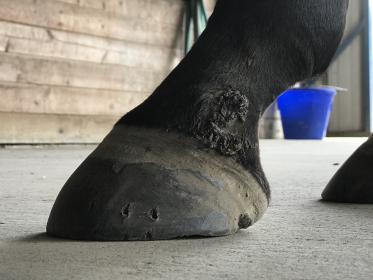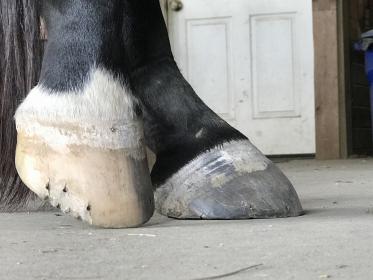I’ve been having increasing difficulty with my mare’s hind legs - specifically the left hind. She’s a 7-y/o OTTB, off track for 3 years, with 2 of those in letdown as a mommy. She has something going on in her lower lumbar/SI but I cannot get the vets to listen to me, other than to tell me to spring for a bone scan.
Acupuncture helps. So are carrot stretches. But it is not enough. I had a good PPE, and her lower lumbar are fused, the rest of her spine is fine, her ROM is WNL. She tends to be tense (tentative? uncertain?) about using her back but thru good exercises we are working thru that and it’s gotten hugely better.
BUT. When you lift her left hind, she will dance around trying to get it away from you, fall over on her right hind (like she can’t stand on it). After a few mins of ‘yes give it to me’, she will finally hold it for you - until you try to extend it backward. Then, you might get 5 seconds and she’s jerking it back.
Yesterday, even after spending the last 6 weeks dedicatedly working on this, farrier gave up on her and said he would no longer attempt to put hind shoes on her and next time he sees her he wants her drugged (Domorsedan) - which I have no real problem with - other than getting a vet to actually prescribe it.
I’ve had 2 appts with top tier lameness vets, to no avail. Last one said to take her home and break her, bring her back when there was something to block. Uh, no.
The only bones I’ve not radiographed are her neck, and ones you can’t get on x-ray. Everything else I did, and they are all clean. Even stifles.
I had a thought, and if someone is well versed in spinal movement please answer me: When the leg comes forward, the spine rounds up - which opens the vertebrae. So when the leg goes back, do the vertebrae move the opposite way? I am wondering if extending her leg back causes some kind of pinching in the lower lumbar where she’s fused at.
She also does not want the leg brought outwards, especially if you lift it too high (which farriers always want to do).
We’ve done a neuro exam, that was the first thing vets did, it was fine. Given the decent films I’m suspicious of soft tissue “something” - it would be old but that doesn’t mean it can’t flare up again given the right circumstances.
I don’t know where I should go from here. I am suspicious that an SI injection would help, given how much relief she seems to get from acupuncture.
Ideas anyone?? TIA.

 at least on kids horses.
at least on kids horses.
